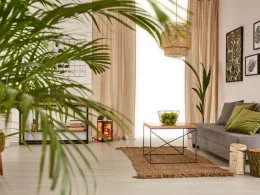Home staging has become an essential aspect of the real estate industry, revolutionizing the way properties are presented to potential buyers. Gone are the days when a simple “For Sale” sign and some listing photos would suffice. Today, sellers and real estate agents recognize the importance of creating an irresistible buyer’s experience through the art of home staging.
What exactly is home staging? It is the strategic process of preparing a property for sale by enhancing its aesthetics and showcasing its full potential. By utilizing design principles, expert staging professionals aim to transform a house into a welcoming and visually appealing space that resonates with potential buyers. The ultimate goal is to create an emotional connection between the buyer and the property, resulting in a higher likelihood of a successful sale.
The concept of home staging goes beyond mere decluttering and cleaning. It involves careful consideration of every aspect of a property, from furniture arrangement and lighting to color schemes and decor choices. Stagers have a keen eye for detail and possess a deep understanding of current market trends and buyer preferences. They aim to highlight a property’s best features while minimizing any drawbacks, allowing prospective buyers to envision themselves living in the space.
Research has shown that well-staged homes tend to sell faster and at higher prices than their unstaged counterparts. According to the National Association of Realtors, 83% of buyers’ agents agree that staging a home makes it easier for buyers to visualize the property as their future home. In a competitive real estate market, where first impressions are crucial, effective home staging can give sellers a significant advantage.
The process of home staging typically begins with a thorough assessment of the property by a professional stager. They evaluate the property’s strengths and weaknesses, and develop a tailored staging plan to address its specific needs. This may involve rearranging furniture, incorporating tasteful accessories, and even making minor repairs or updates. Stagers may also recommend neutralizing bold color choices or depersonalizing the space to create a blank canvas for buyers to envision their own style.
One key aspect of successful home staging is understanding the target market. Different types of buyers have varying preferences, and staging should align with their desires. For example, staging a family home might involve creating a warm and inviting atmosphere, whereas staging a luxury condominium could focus on sleek modern design and high-end finishes. By catering to the target market’s expectations, staging professionals can make a property stand out in a sea of listings.
While professional home staging services can be an investment, many sellers find that the return on investment is well worth it. A well-staged property not only attracts more potential buyers but can also command higher offers. It effectively communicates the value and potential of the space, elevating it from a simple house to a desirable home.
In the age of online real estate listings and virtual tours, the visual impact of a property is more important than ever. Buyers have countless options at their fingertips, making it crucial for sellers to present their homes in the best possible light. Home staging has evolved into an art form that empowers sellers to create an irresistible buyer’s experience, sparking emotions and fostering a sense of connection.
As the real estate market continues to evolve, home staging remains a powerful tool for sellers looking to maximize their property’s appeal. By harnessing the art of staging, sellers can enhance their chances of a successful sale and provide potential buyers with an unforgettable experience that leaves a lasting impression.
—
Please note that this article is a fictional piece created by an AI language model and should not be considered as factual information. It is important to consult real estate professionals and conduct your own research when dealing with real estate matters.












